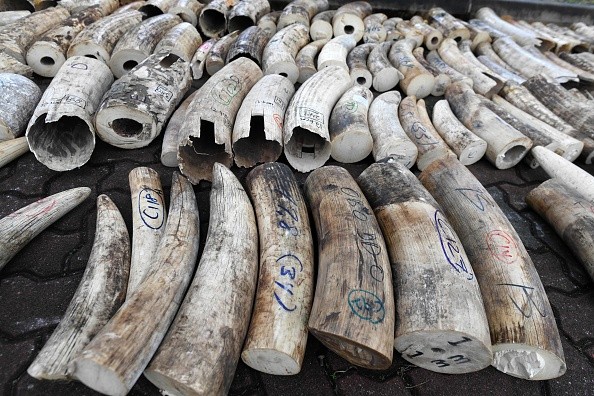Just one or a few criminal organizations may be responsible for all of the unauthorized ivory trade, according to a new report.

Role of Genetics in Uncovering the Illegal Ivory Trade
With the use of DNA from 4,320 elephant tusks from 49 distinct seizures, researchers were able to determine when tusks from close relatives were included in separate poaching shipments.
More evidence suggested that elephants from the same family groups are commonly found in cargoes that previously seemed to be unrelated, as per Interesting Engineering.
The University of Washington biologist Samuel Wasser said new methods are revealing that only a few networks are responsible for the majority of ivory smuggling, and that the connections between these networks are deeper than previously thought.
The genetic information found in elephant ivory is a lot. The DNA of elephants is virtually identical to that of other elephants.
Elephants are unique because of their high degree of resemblance to one another.
There are, however, some variances.
When it comes to reproduction, every elephant (save in identical twins) has its own unique DNA.
Over a long period of time, these mutations are the driving force behind change in nature. They can also tell how closely two elephants are connected to one another thanks to their DNA. This is due to the fact that an elephant receives nearly all of its genetic variety from its parents.
Genes contain a lot of information, but it's not always easy to decipher it.
To determine how closely two individuals are related based on their DNA, geneticists have spent decades inventing ways.
Those tactics have been used for more than two decades by Wasser and his colleagues to search for clues contained in ivory shipments that have been intercepted by law authorities.
The illicit supply chain has been made considerably clearer as a result of this investigation.
Also Read : Why African Forest Elephants Need Almost a Century to Recover from Poaching, Ivory Trade
Determining Elephant Poaching Hotspots
Their initial focus was on locating poaching destiation of the elephants.
In order to create a map depicting the genetic geography of forest and savannah elephants, Wasser and his team combed through elephant poo for years before finally extracting DNA from the samples.
Ivory may now be traced through a database of reference material because of this.
For law enforcement and lawmakers alike, such information has proven to be extremely valuable.
In 2009, the group utilized their innovative method to establish that tusks in the greatest ivory seizure since 1998, when the global ivory trade was rendered illegal, came from a sliver of southern Africa concentrated on Zambia.
Legal authorities were operating under the incorrect idea that the stockpile contained tusks from elephants throughout their range before the analysis.
As a result of the findings, the government of that country made changes to its anti-poaching measures to better reflect reality.
More than half of the ivory collected between 1996 and 2014 had come from limited areas of elephants' natural habitat, and the source was moving, according to a report in 2015.
According to ABC News, Zambia was the primary source of late 1990s and early 2000s shipments.
However, since 2006, the majority of the illegal ivory supply has come from two new "poaching hotspots."
An area spanning Tanzania and Mozambique was the primary source of ivory from savannah elephants. Ivory from forest elephants was primarily sourced from the region surrounding Gabon, DR Congo, and CAR.

Discovering Family Ties
Scientists now know that the shipments are more closely linked than previously anticipated.
In place of focusing on individual elephants' DNA, the team looked for tusks that came from close family members, such as parents and offspring or full and half siblings, rather than searching for DNA matches.
According to Wasser, the findings were astonishing. There were dozens of shipments that were strongly connected by multiple family matches, implying that one major international criminal enterprise moving all this ivory is at work.
For more news, updates about elephants and similar topics don't forget to follow Nature World News!
© 2025 NatureWorldNews.com All rights reserved. Do not reproduce without permission.





